1066 William the Conqueror left Normandy for Hastings on D for departure day.
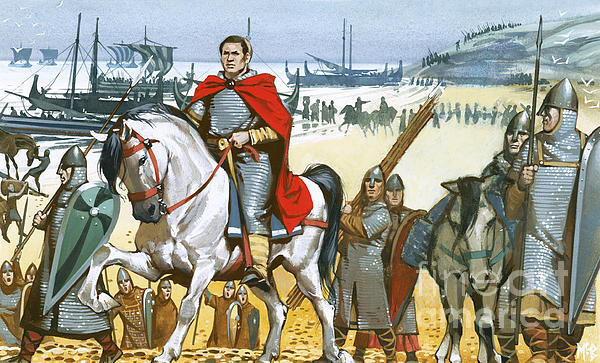
1540 Ignatius Loyola founded the Jesuits swearing an oath of personal loyalty to the Pope. Hence known as the Pope’s army.

1825 George Stephenson inaugurated the Stockton and Darlington Railway to haul coal from Newcastle.

1905 Albert Einstein published a paper that included the incantation.

1962 Rachel Carson published ‘The Silent Spring.’ She is pictured testifying before Congress in the days when facts and science were considered important in Washington D.C.

‘The Unseen’ (August 1945)
IMDb meta-data is runtime of 1 hour and 20 minutes, rated 6.2 by 229 cinemitizens.
Genre: Old Dark House
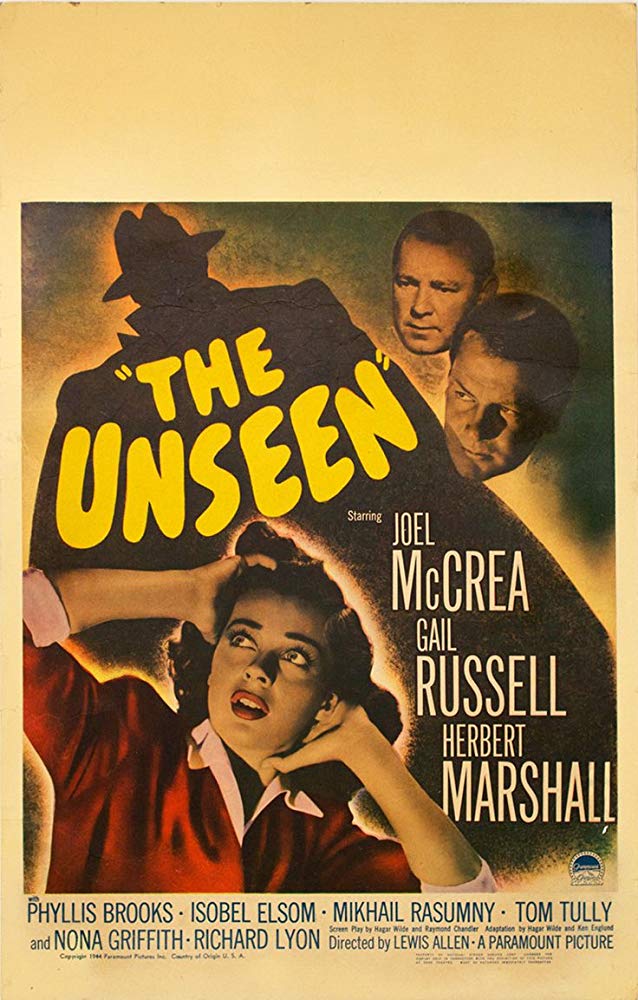
Verdict: Gail Russell is the show.
Big Joel McCrea, before he devoted himself exclusively to westerns, is a reclusive business man with two young children. His wife, their mother, died a few years ago. He fired their previous governess for reasons not specified and hired the ingenue Gail Russell. A kindly doctor is much in attendance, Herbert Marshall of the Wooden Leg.
They live next door to …. an Old Dark House. Mac comes and goes at all hours. For a recluse he is out and about all the time, leaving Gail to cope with the rebellious children. ‘Make them obey,’ is his only advice to her as he slams the door. She does; they don’t.
Turns out a woman was murdered nearby years ago, and others since. At least one of the murders coincides with one of Mac’s nocturnal outings. Gail reads ‘Jane Eyre’ for some tips, as did the screen writers.
The dismissed former governess, retains an hypnotic hold on the boy who in turn dominates his little sister. This trio plots to undermine Gail, who makes it easy by falling into every trap set for her. Inevitably, Gail goes to the Old Dark House to find answers. Her survival instinct is less than a Girl Guide at a bus stop.
The fraternity brothers got some of the characters mixed up, and never did figure out what the Old Dark House has to do with Maxine. Or why reclusive Mac is always out. Or why any of it matters. But they did learn to beware of kindly doctors much in attendance.
Raymond Chandler got a writing credit along with three others on this, but I did not hear any Chandler dialogue. The story is from Ethel Lina White’s novel. She also wrote the novel used for ‘The Lady Vanishes’ and ‘The Spiral Staircase.’ Brava!
Gail Russell is eye candy but she fell on hard times, tripping over bottles, aged prematurely, got terminal stage fright, and disappeared from view. She was in a Randolph Scott film ‘Seven Men from Now’ (1956) reviewed elsewhere on this blog some years after this in one of several efforts at a comeback.
Lewis Allen directed to perfection, getting the most out of the script and the players. It is a miniature version ‘The Turn of the Screw.’
26 September in history.
Sometimes what does not happen is even more important than what does happen. Read to the end to see why.
1580 Francis Drake returned from three-year circumnavigation. And without GPS.
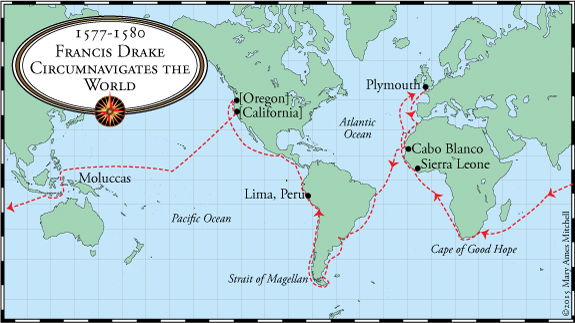
1829 Scotland Yard founded to investigate crimes. The property had belonged to a Scot.

1913 Panama Canals locks began raising ships.

1960 First televised presidential debate in Chicago. Cool Jack versus intense Dick.
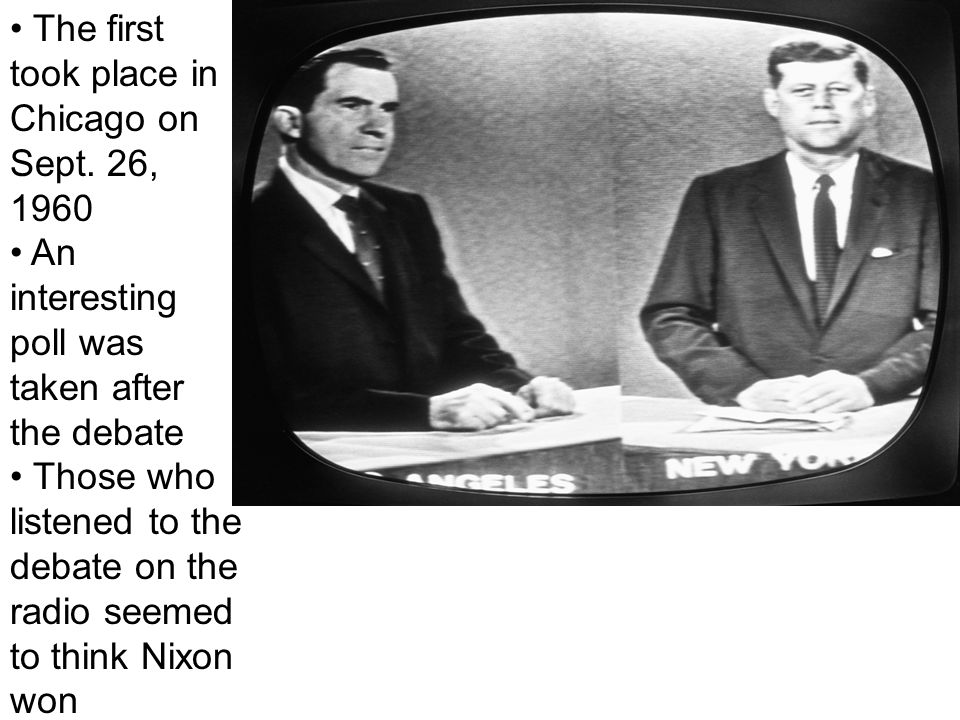
1983 Stanislav Petrov took time to think and then did not act. The bells rang, the buzzers buzzed, the lights flashed, the countdown voice droned minutes to impact, the computers calculated the death toll, and two hundred subordinates looked to Colonel Petrov to act. Details on Wikipedia.

‘The Night America Trembled’ (1957)
IMDb meta-data runtime is 55 minutes, rated 6.9 by 92 cinemitizens.
Genre: Docudrama.
An episode of the long-running CBS television program ‘Studio One.’ It combines narration by Murrow with re-enactments.

Verdict: When Ed Murrow speaks, I listen.
In this case it is a dramatisation of a CBS radio broadcast in 1938 of a story published 1898 in Great Britain. The result was headline news across the United States and the world. Huh?
On Halloween night, October 30, 1938, Orson Welles’s Mercury Players of the Air performed an adaptation of H.G. Wells’s ‘War of the Worlds.’ It took the form a news report, including a reporter in the field at Grovers Mill in New Jersey. We see all of this being simulated in the CBS radio studio.
Those who heard the broadcast and reacted included a teenage babysitter, card playing college boys, patrons at a neighbourhood bar, and a police officer at a switchboard. Some people went nuts. Others ran amok. Others loaded shotguns. Many hid under the bed. Some fled. Fleeing was hard since no one knew where Grovers Mill was. All of this in response to a radio broadcast.
The next morning the ‘New York Times’ thundered the news of the national panic caused by the broadcast!

Why the panic?
The program was advertised long in advance in newspapers and magazines. The newspaper radio listings, including those in the ‘New York Times,’ clearly identified the program as an entertainment. The on-air introduction made that clear, too.
However, ‘The Mercury Players of the Air’ was a sustaining program owned by the CBS network. It had no commercial sponsors so there were no commercial breaks. It ran straight through for one hour. Once it started off it went, and as later research found, many people were dial surfing and missed the introduction and had not read the listings but tuned in part way through.
Many a PhD has since dined out on the aftermath. Was there really a panic? Whoa, here comes the Four Horses of Definition. What explains the reaction? Sociological, psychological, dietary, demographic, ethnic, swamp gas explanations have all been seriously offered and seriously considered in PhD dissertations. Faux News denies it ever happened or Hillary did it. One or the other.
Murrow put the programming in the context of the news of 1938 from Europe and Asia. In the East Japan was devouring Formosa, Korea, Manchuria, China, and Shangri-la. From Europe the air fleets of Nazi Germany featured in every movie newsreel. It had re-occupied the Rhineland. Seized the Saar basin. Anschlussed a very willing Austria. Carved the Sudeten out of Czechoslovakia only a few days before with goose-stepping automatons.
Pundits were describing ever more terrible weapons of modern war beneath the seas and from the skies. These combined with memories of chemical weapons in the Great War. What a brew!
For some auditors, who missed the newspaper advertisement, the program listings, and the introduction, the descent on Grovers Mill might well have been the spawn of Naziism. To listen to the broadcast now there are only a few gasped, terse descriptions of the Martians and someone in distress might not fathom those. Or just conclude that these were the creatures of the Asiatic Japanese or Satanic Naziis.
That was one of the findings of Hadley Cantril’s ‘Invasion from Mars: A Study in the Psychology of Panic’ (1940): Many who heard part of the broadcast were prepared for catastrophe by all the bad news that just kept coming.
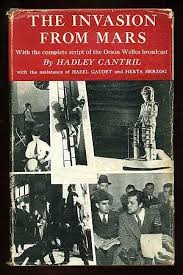
These prepared people had endured the unimaginable for a decade: the Wall Street Crash, the Great Depression, the Dust Bowl, armies of the unemployed, starvation, diseases out of control, along with the Asian and European political news. The times, they were apocalyptic.
The story is that Cantril in Princeton heard the broadcast and then read the ‘New York Times’ the next morning, and mobilised the research project within hours to identify and interview auditors. Quite impossible today with months of Ethics Committee vetting, budgets laid down years in advance, KPIs that suit research managers, corporate plans, the annual cycle of research grants, and more.
But now back to the film, there is a raft of new faces in the re-enactments, including Ed Asner, John Astin, Warren Beatty, James Coburn, Vincent Gardenia, and Warren Oates. Babysitter Susan Hallaran eats the wallpaper as they say in show biz, though this was her last credit on the IMDb.
Alexander Scourby is the radio announcer with the mellifluous voice, and he carries the show on radio. The son of Greek immigrants who learned English from Shakespeare.
But the star of the show is neither named nor given any lines: Orson Welles.
 The wunderkind at work that very night.
The wunderkind at work that very night.
He wanted nothing to do with this reprise. Whether the broadcast caused a panic, there was a sizeable reaction to it. CBS was cross-pressured because on the one hand it wanted the acclaim of such great influence (to lure advertisers in the future) but it wanted no part of the complaints. It did what every large organisation still does and delegated responsibility downward. The fact that Welles, for once, had done everything through channels and had approvals all the way to the top, was conveniently forgotten by the professional amnesiacs of management in CBS. Such amnesia is surely the subject of one McKinsey management seminar.
It was left to Welles alone to eat a lot of crow by way of apology. This was not something that came easily to this mercurial Zeus, and he had no wish ever to re-visit it. That is, he never wanted anything to do with CBS again, as Murrow obliquely noted.
The gossip on the inter-web is that H. G. Wells and Orson Welles met a year later in San Antonio Texas where each was on a speaking tour. Hope they stayed in a better hotel there than I did once upon a time.
Murrow’s documentary makes no mention of the 1953 film. Yet it would have come to mind for many in the audience. There are several other documentaries about the broadcast, one or two with similar titles.
‘The Girl Who Dared’ (5 August 1944)
IMDb meta-data runtime is 56 minutes, rated 6.2 by 103 cinemitizens.
Genre: Old Dark House

Verdict: Sly fun.
Perry White and Mrs live in an Old Dark House at the end of a very long causeway. Otranto mansion comes equipped with a black stereotype, the ever ready Will Best, and a vast garage.
Then one dark and stormy night a party of relatives knock on the door! Perry is a perfect host, and why not when one of the guests is the first Superman disguised behind a pencil moustache. The guests all have letters of invitation:
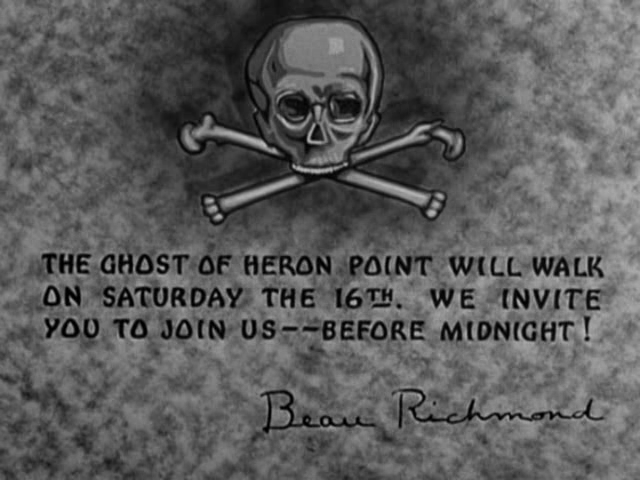
But neither Perry nor Mrs Perry sent any such invitations. That puts arrowroot into the plot.
Guess what! No sooner are they assembled than the lights go out, the telephone goes dead, the cars are immobilised, the weather turns violent, and then it gets worse. They are alone! They are cut-off! They are in an Old Dark House movie! [Gasp!]
Among the guests is the redoubtable Veda Ann Borg who plays a double role. That sounded good to the fraternity brothers since Veda is one live wire. Regrettably, one of the twin sisters she plays is snuffed at get-go, while the other reacts by locking herself in a room. Not even Veda can do much in those circumstances.
Also invited (by someone unknown, and it stays that way) is the ever thuggish Grant Withers who was the short-priced favourite as villain from the start. Mr Smooth insinuates himself in the party. Now and again faces appear at the window.
Smooth knows something the others don’t. Some dastardly cur has stolen the radium from the watches of the doctors at a nearby hospital and that thief is amongst the denizens of the Old Dark House, though how and why are never explained. How could it be stolen? Why come to the island with it? Who did invite all these people? To quote Ludwig Wittgenstein, and how many times does that happen in a movie review, ‘whereof one does not know, one must not speak.’ In plain English that is ‘Dunno.’
Winsome Girl does not live up the the billing but how could she: ‘OUT OF THE FOGS OF FEAR! STORMS OF TERROR!…came this amazing person…to thrill you!’ However, she was cool-headed, resourceful, and capable of surprising even Mr Smooth. No screaming. No fainting. No tripping. None of the usual tropes for women to make snowflake men feel superior. She and Smooth combine in a neat deception at the end to reveal the conspicuous villain. The screen play breezes along. The direction is crisp.
Believe it or not the spindly Kirk Alyn played Superman in the first film in 1948. He must have gotten the job after posing as the 98-pound weakling in Charles Atlas advertisements and the casting director called the wrong guy.
As this picture travelled across the United States the yellow telegrams from D-Day started to arrive. Three thousand were sent in one day.
‘The Hidden Hand’ (7 November 1942)
IMDb meta-data is runtime of 1 hour and 3 minutes, rated 6.1 by 254 cinemitizens.
Genre: Old Dark House.

Verdict: There was still life in the Old Dark House.
Wealthy aunt Lorna invites all her carnivorous and rapacious relatives for a weekend at her Old Dark House. Along with a few stragglers there are married couples who bicker among themselves and a decorative nurse who has no duties, each hates Auntie, and all fear that Auntie’s companion, Mary, will inherit the dosh. Fortunately Mary’s beau is none other than Peter Gunn.
Auntie has plans of her own and starts by sending a cake full of steel files to her brother who is slammed up in an asylum for criminally bad actors. He is Milton Parsons whose bug-eyes have graced many a Charlie Chan film from this era. Once Miltie has outwitted the prison officials by walking out the door, while they are smoking, he secrets himself in the Old Dark House’s secret passages, concealed sliding panels, and trapdoors. This ODH has all melodramatic-conveniences including a black stereotype to do the work.
Auntie recruited bro to protect Mary from the Huns, i.e., the relatives. Then the fun begins when Auntie’s pet raven, named Poe — what else, dies after eating a biscuit from her plate. Next thing you know, Auntie is dead. The carrion move from bickering to murder.
Miltie was looking forward to trying his hand at murder, again, but they keep dying before he can get to them. Are they murdering each other, or….is there another presence?
Thereafter they drop like….ravens. Six by the fratenity brothers’ count.
Auntie and Miltie are superb. There is a neat trick with a wall decoration. An even neater trick with the doctor and his needle. A fine denouement. And a lot of energy all around. Miltie’s bug eyes behind the filigree of an air vent occurs just enough times to be startling.

Yet the ‘New York Times’ gave it a bored and boring review in 1942. The condescension of many reviewers in that inflated organ is noteworthy. Most them don’t seem to like movies.
As usual Will Best realises something is afoot long before this superiors who each dismiss his warnings. Though admittedly his reactions are put in more context than usual.
The day after the release of this film, Operation Torch landed American troops at nine points along the coast of North Africa. This task farce sailed directly from Norfolk Virginia in secrecy. Surely the longest amphibious invasion ever launched.
25 September in history
Time to take your daily dose of history.
1513 Spaniard Vasco de Balboa saw the Pacific Ocean, having crossed Panama. The first European to see the vast Pacific. No relation to Rocky.
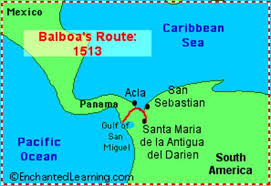
1926 Henry Ford introduced in his Michigan plant the forty-hour week with five days of eight hours of work. The arrangement was conditional on performance and completely at the company’s discretion. Ford wanted the best workers. It took unions to extend the practice and legislate it.

1942 United States War Labor Board urged employers to offer equal pay for women for equal work in war industries. Mouthed in D.C. and ignored far and wide. No surprise to Rosie. Although why the Labor Board did so is a mystery. Was this Eleanor Roosevelt’s influence. I’d like to think so.

1996 Ireland’s last Magdalene laundry closed. These establishments started to rehabilitate fallen women, became punishment sentences, and finally slave labor. Estimates say at least 10,000 women toiled in these sweat houses along with their girl children. They figure in some of Benjamin Black’s Quirke novels, some of which are reviewed elsewhere on this blog.

2005 In Northern Ireland, the IRA laid down its arms. Amen.

24 September in history
1529 Ottoman Suleiman the Magnificent began the siege of Vienna.

1664 The Dutch surrendered Manhattan to the British.

1908 The first Model T Ford rolled off the assembly line.

1959 Republican President Dwight Eisenhower ordered the U.S. Army’s 101st Airborne Division, which held at Bastogne, to protect school children in Little Rock Arkansas from Bible thumping gorgons baying for blood. 
1979 Compuserve offered online services to consumers.

23 September in history
1642 Harvard College graduated its first class. No witches. None there the semester I was there either.

1806 Meriwether Lewis and William Clarke returned after three years in the wilderness without GPS but with Sacagawea. Part of the trip was along the River Platte.

1846 Berlin Observatory observes Neptune, right where it was supposed to be. Famous for its storms now as shown below.

1884 Herman Hollerith patented a tabulating machine. The start of the pocket calculator.

1932 Saudi Arabia became Saudi Arabia. [Witticism needed.]

22 September in history.
Which one would you tell your nearest and dearest? Why that one?
1499 The German, Italian, French and Romansh Confederation Helvetia declared itself to be the nation of Switzerland, leaving the Holy Roman Empire.

1656 In Maryland an all woman jury heard the case of Judith Catchpole (no relation to Eric) on the charge of infanticide. Her defence was that she had never had a child. The jury concurred.

1735 British Prime Minister Robert Walpole moved into a house at 10 Downing Street.

1862 U.S. President Abraham Lincoln signed the Emancipation Proclamation.
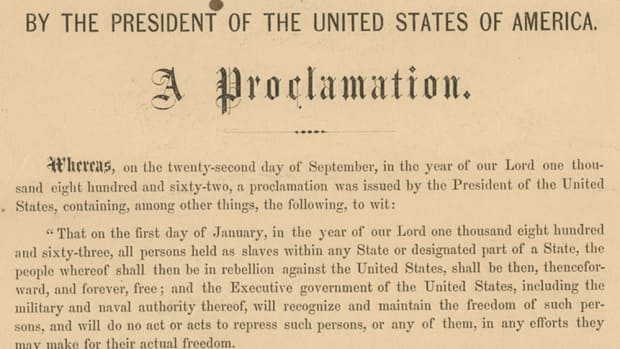
1947 A Douglas C-54 flew the Atlantic on automatic pilot.

